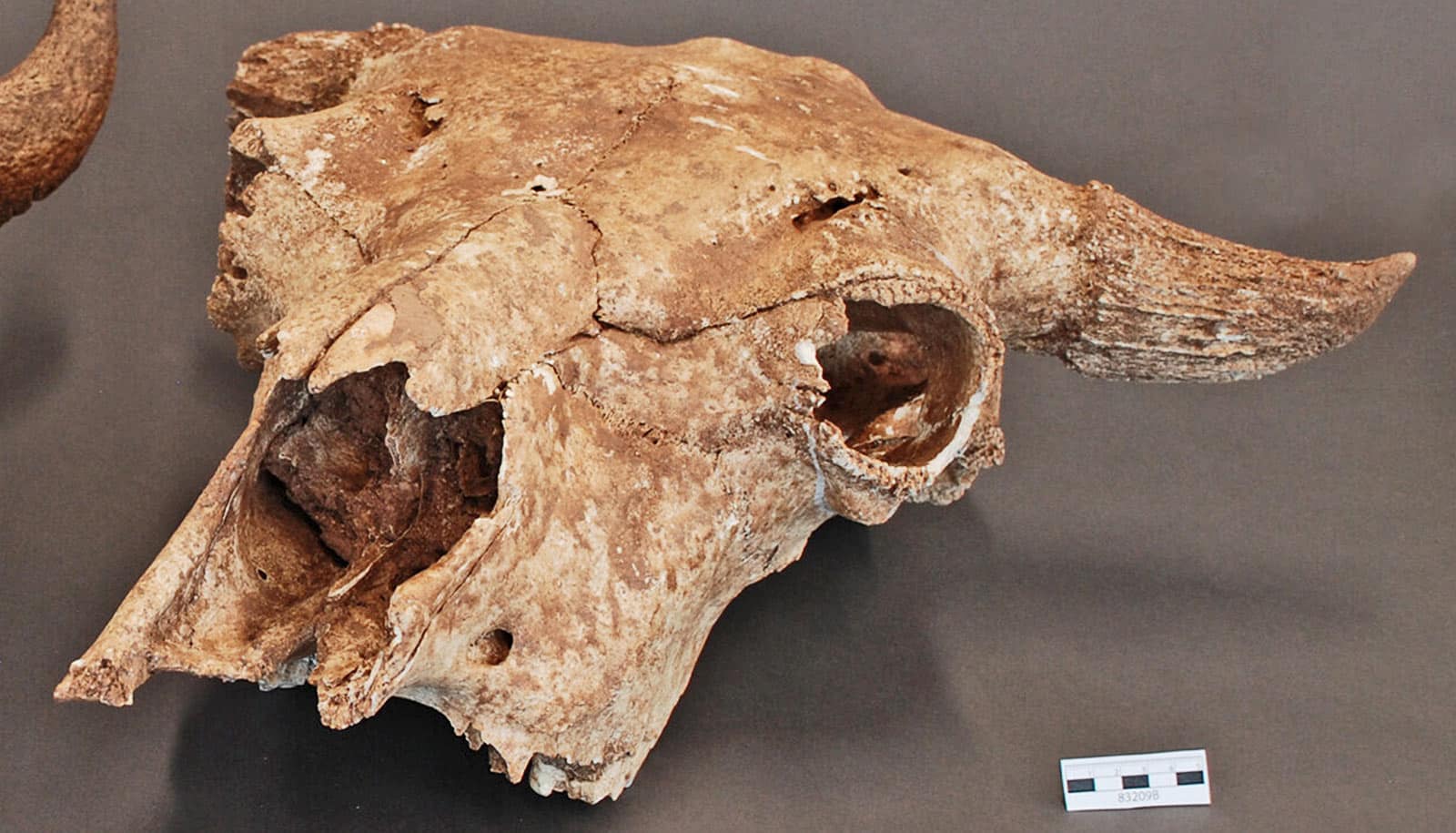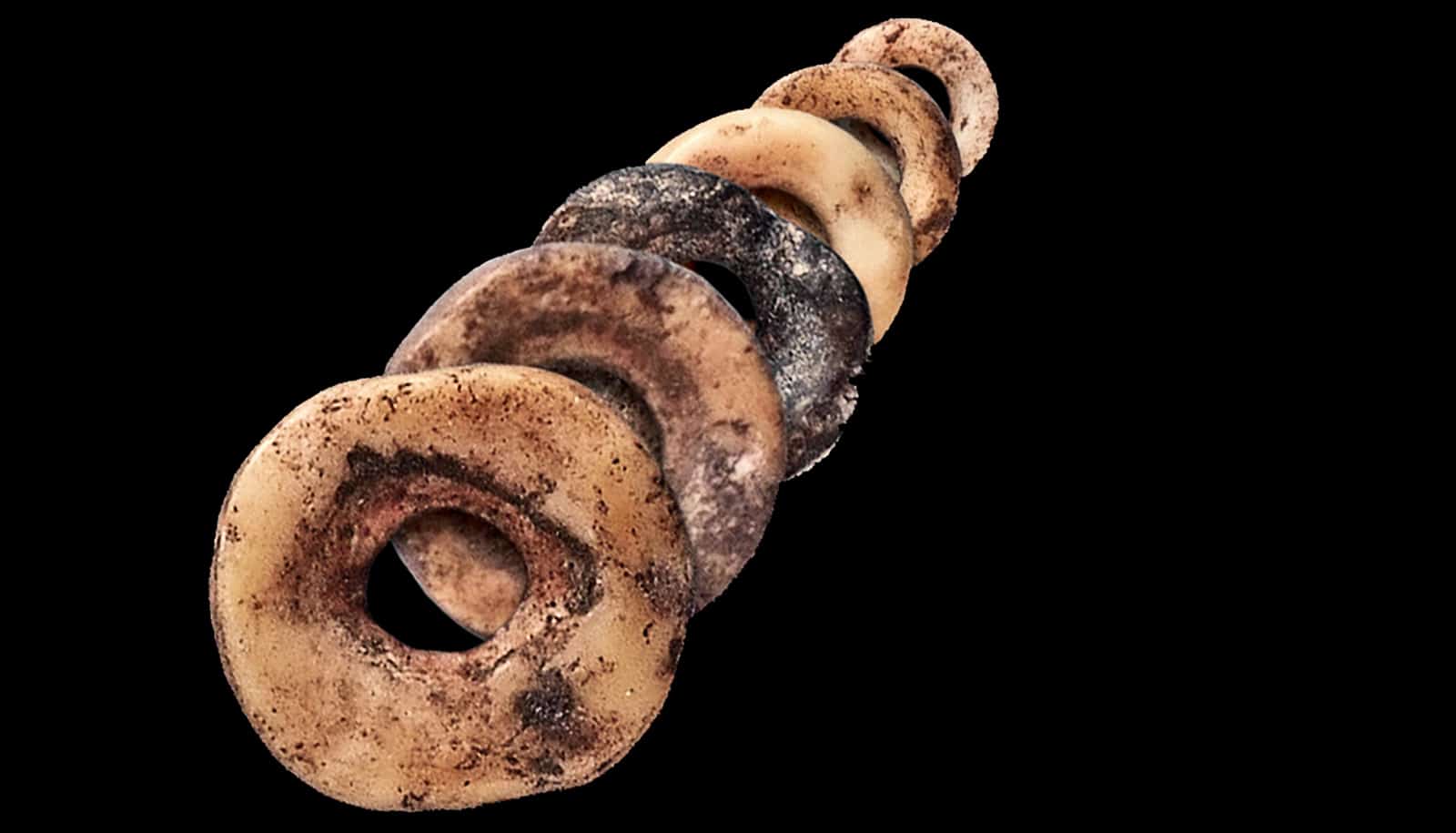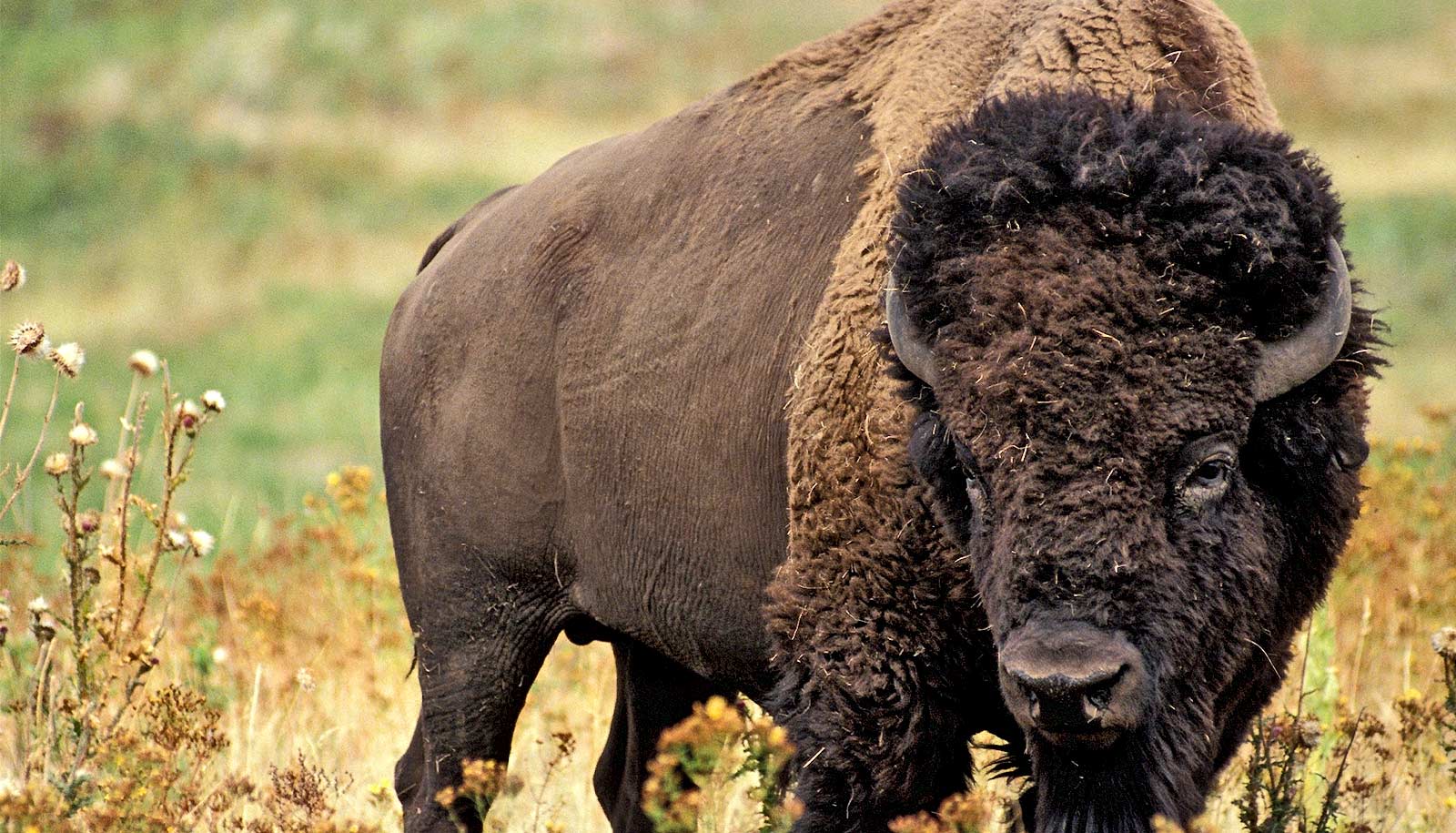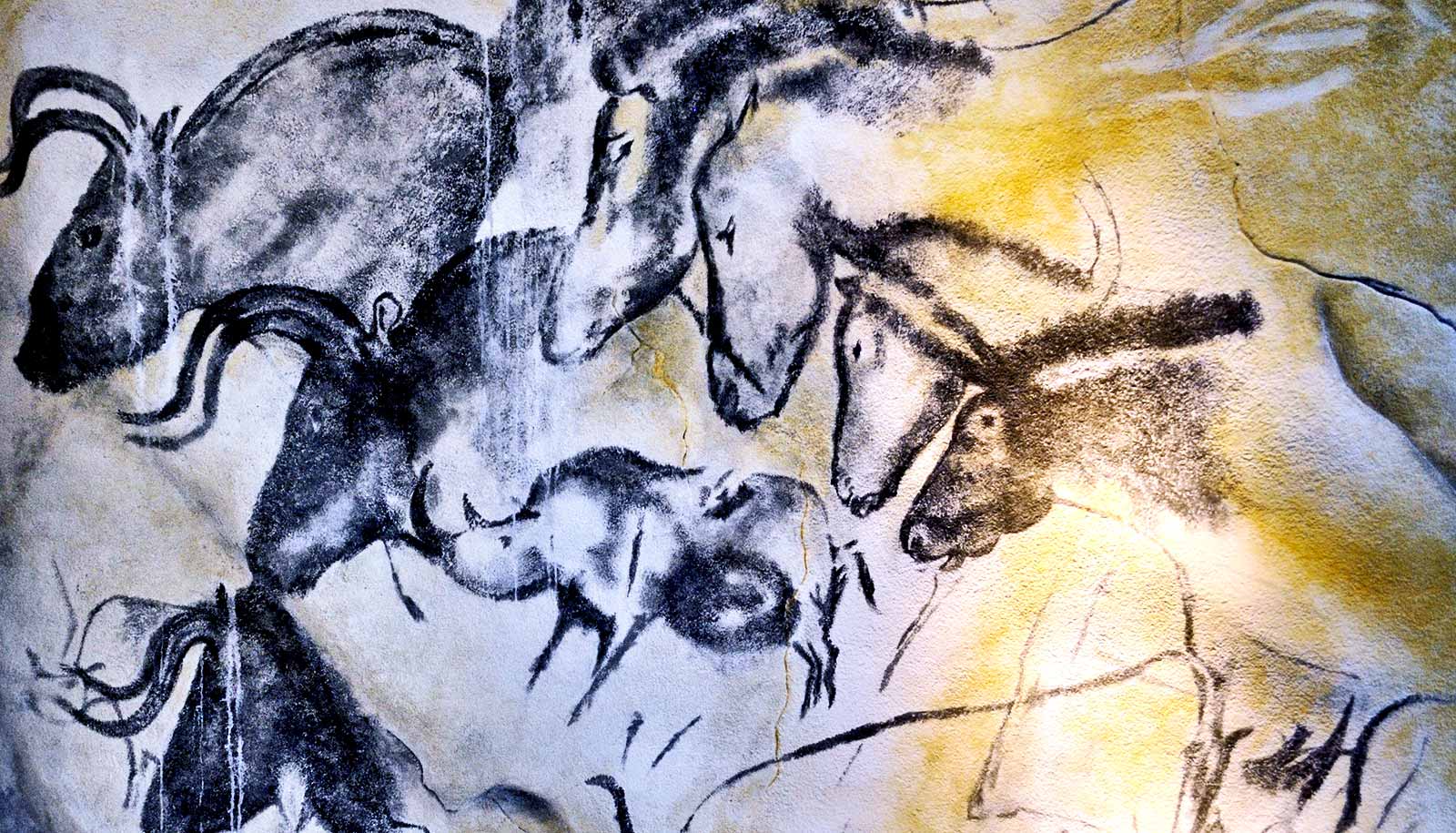Early human foragers may have relied on eating the partially digested vegetable matter, called digesta, found in the stomachs and digestive tracts of bison and other large game herbivores.
But foraging hypotheses and models don’t include this important source of calories and carbohydrates, according to a new study.
Folding digesta into these models will allow researchers to better address major questions in evolutionary anthropology. It even calls into question the idea that “hunting and gathering,” which all prehistoric people relied on until about 10,000 years ago, was divided by sex, according to Raven Garvey, associate professor of anthropology and affiliate of the Research Center for Group Dynamics at the University of Michigan Institute for Social Research and author of the study in Evolutionary Anthropology.
Early foragers may, in some contexts, have consumed their required portion of “vegetables” in the form of digesta, Garvey says. Eating not only the herbivores’ meat and organs but also digesta would net a person a significantly higher number of calories, and also would expand the kinds of macronutrients such as protein, fat, and carbohydrates available to the forager.
“Failure to account for this underappreciated resource could have important consequences in studies that address major questions in evolutionary anthropology,” she says. “Accounting for digesta as a source of both kilocalories and carbohydrates leads to predictions that differ from foraging models that do not include this resource.”
The new study explores the significance of digesta in two of these questions: sex-divided subsistence labor and archaeologically observed increases in plant use and sedentism, or the transition to more permanent settlements.
Ice Age female hunters
Using estimates of available protein and carbohydrates in the native tissues and digesta, respectively, of a large ruminant herbivore (Bison bison), Garvey shows that, with digesta included, a group of 25 adult foragers could meet the USDA’s average recommendations for proteins and carbs for three days without additional supplementation.
Such a resource could have been crucial in certain contexts, like in areas where plants were scarce or indigestible to humans. It could also have eliminated the need to hunt and gather separately since total nutrition could be obtained from a single resource.
In this way, Garvey’s “bison model” raises questions about the assumption that human subsistence labor was always strongly sex-divided and the traditional picture of exclusively male-provisioning of large-bodied prey. Women’s participation in hunting becomes likelier when high-energy resources can be acquired with low risk. In times and places where large-bodied herbivores were abundant, a group’s overall hunting success could have been improved, and plant-animal scheduling conflicts reduced through women’s hunting.
There is some archaeological evidence to suggest female hunting (and the child care provisioning that would have entailed) was more common during prehistory than in the later ethnographic period, Garvey says.
A study of “grave goods” in burials across North and South America, for example, found that perhaps 30%-50% of all large-game hunters in the Americas during the late glacial (late Pleistocene and early Holocene) era, between 8,000 and 13,000 years ago, may have been female.
This strategy might have been influenced both by the relative abundance during that period of large-bodied herbivores and by people’s high mobility. Following migratory game, groups increased the reliability of hunting, but created conditions that reduced the accessibility of edible plants. Digesta consumption would have bridged this resource gap.
Digesta consumption
Digesta consumption could also have contributed to major changes in dietary breadth and human mobility in the Americas, Garvey says. Her “bison model” indicates that while large-bodied herbivores could provide small human groups’ total nutrition for short periods, the ratio of protein to carbohydrates in a single animal makes digesta an unsustainable source of carbohydrates in the long run.
That is, a 1,000-pound bison could provide a group of 25 adult foragers with three days’ worth of protein and carbohydrates, but if they pursued a fresh animal every fourth day, they would leave approximately six days’ worth of protein unconsumed each bison kill.
As human populations grew in size, it would have become increasingly difficult to address the carb deficit: The level of hunting required to ensure sufficient carbohydrates would become unsustainable. In such cases, Garvey says, the need for reliable access to both protein and carbohydrates, without which humans can’t survive, would necessitate significant social reorganization of settlement and subsistence.
Even if herbivores and their stomach contents were not a group’s sole source of key macronutrients—as Garvey notes they likely were not in most times and places—digesta’s positive effect on herbivores’ nutrient profiles could, when available, have affected plant foraging behaviors, relaxing the demand for fresh plant foods and perhaps freeing up time and energy for other activities.
“Many anthropologists are concerned that our evolutionary understanding of humans is disproportionately influenced by contemporary behaviors and cultural expressions that may bear little resemblance to those of the past,” Garvey says.
“Allowing for the possible dietary importance of large herbivore digesta and other understudied resources can lead to new interpretations of past behaviors and a healthy reevaluation of assumptions on which our evolutionary hypotheses rest.”
Source: Tevah Platt for University of Michigan



